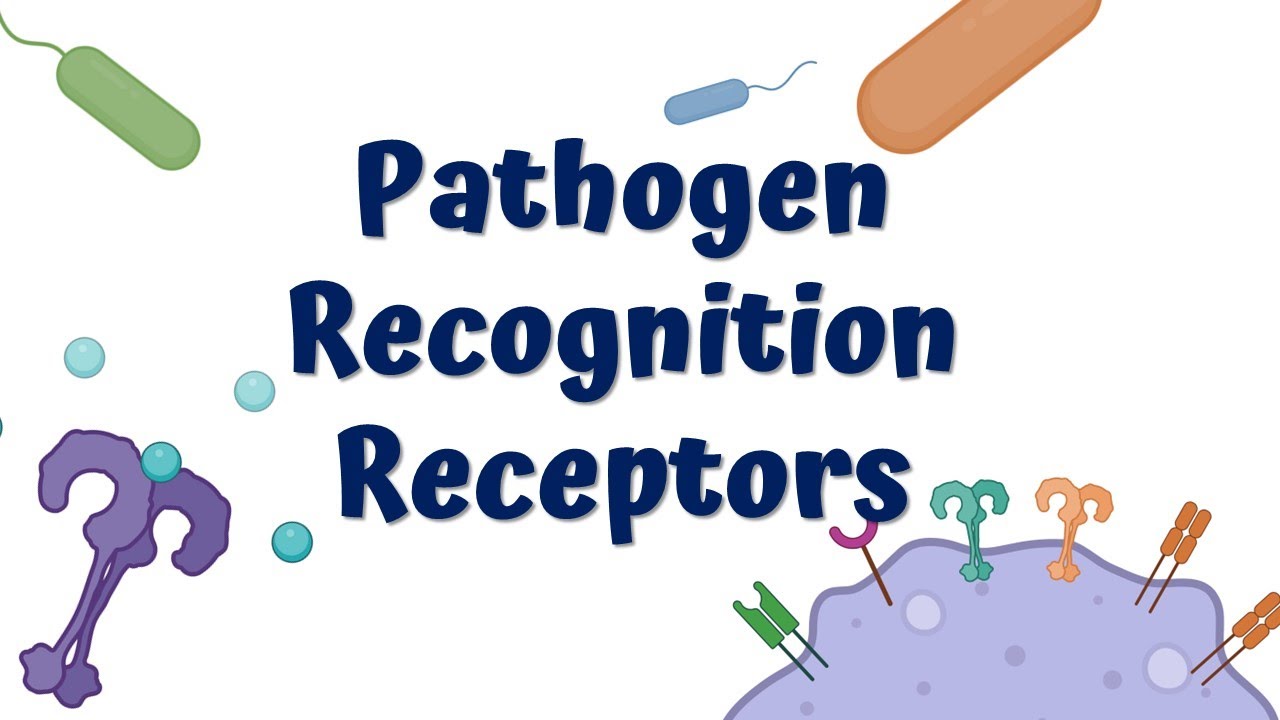B06IMM 06
Summary
TLDRThis video explains how our innate immune system, specifically macrophages, recognize and respond to pathogens like bacteria, fungi, viruses, and parasites. The immune system uses pattern recognition receptors (PRRs) to identify specific molecules on microorganisms, known as pathogen-associated molecular patterns (PAMPs). The macrophages then activate immune responses by releasing cytokines and chemokines. The recognition of these patterns helps guide the immune system to appropriately fight off infections, either by activating specific responses for different pathogens or by communicating with other immune cells. The video also highlights the role of TLR receptors and the difference between recognizing extracellular and intracellular pathogens.
Takeaways
- 😀 Macrophages are key players in recognizing and engulfing microorganisms to protect the body from infections.
- 😀 PAMPs (Pathogen-Associated Molecular Patterns) are specific molecular patterns found on pathogens that help the immune system recognize foreign invaders.
- 😀 The innate immune system is constantly exposed to pathogens, but it can identify and combat them using pattern recognition receptors like TLRs (Toll-Like Receptors).
- 😀 Toll-Like Receptors (TLRs) are essential in detecting various pathogens and triggering immune responses through signaling cascades.
- 😀 Macrophages use pseudopodia to engulf pathogens, a process called phagocytosis, and then release cytokines to activate other immune cells.
- 😀 Different TLRs are specialized for recognizing different pathogens, such as viruses, bacteria, and fungi, each activating distinct immune responses.
- 😀 The immune system recognizes microbial DNA, sugars, and proteins as part of its pattern recognition system.
- 😀 The immune response triggered by TLR activation can lead to the production of specific cytokines tailored to the type of pathogen encountered.
- 😀 Macrophages not only fight pathogens but also clear dead cells and debris from the body to maintain health.
- 😀 After macrophages recognize a pathogen, they present microbial antigens to other immune cells, coordinating the body's defense against the pathogen.
- 😀 The interaction between innate and adaptive immunity ensures a comprehensive response to infections, with macrophages bridging the two systems.
Q & A
What is the main focus of this knowledge clip?
-The main focus of this knowledge clip is explaining how the innate immune system recognizes microorganisms, particularly pathogens, and how the body responds to them through immune activation.
What types of microorganisms can the immune system encounter?
-The immune system can encounter both pathogenic and non-pathogenic microorganisms. These include bacteria, fungi, parasites, and viruses, each of which can potentially cause diseases.
What is the role of macrophages in the immune system?
-Macrophages play a critical role in the immune system by engulfing and digesting microorganisms through a process called phagocytosis. They also present microbial antigens to other immune cells and release signaling molecules like cytokines to activate further immune responses.
How do macrophages recognize microorganisms?
-Macrophages recognize microorganisms using Pattern Recognition Receptors (PRRs) on their surface, which bind to pathogen-associated molecular patterns (PAMPs) found on the surface of pathogens. These patterns are characteristic molecules that are commonly found on microorganisms but not on human cells.
What are PAMPs and how do they aid in pathogen recognition?
-PAMPs (Pathogen-Associated Molecular Patterns) are molecular patterns present on the surface of pathogens like bacteria, fungi, and viruses. These patterns are recognized by PRRs on immune cells, such as macrophages, which triggers immune responses to combat the infection.
How does the immune system distinguish between different types of pathogens?
-The immune system distinguishes between different types of pathogens through the recognition of specific PAMPs. For example, bacterial cells have distinct sugar structures and cell wall components, while viruses have unique RNA or DNA patterns that differ from human cell genetic material.
What are Toll-like receptors (TLRs) and what is their function?
-Toll-like receptors (TLRs) are a type of PRR found on immune cells like macrophages. They play a key role in pathogen detection by recognizing specific PAMPs. TLRs are located both on the cell surface and within intracellular compartments like endosomes, where they help identify pathogens that have been engulfed by the cell.
How do TLRs initiate an immune response after pathogen recognition?
-Once TLRs bind to their respective PAMPs, a signaling cascade is triggered inside the immune cell. This leads to the activation of transcription factors that result in the production of cytokines and chemokines, which help recruit and activate other immune cells to fight the infection.
What is the role of cytokines in the immune response?
-Cytokines are small signaling molecules released by immune cells that play a crucial role in coordinating the immune response. They help recruit other immune cells to the site of infection and activate them to respond effectively to the pathogen.
What are some of the key differences in the immune response based on pathogen type?
-The immune response varies depending on the type of pathogen involved. For example, different Toll-like receptors recognize specific PAMPs related to bacteria, viruses, or fungi. The activation of different TLRs leads to the production of distinct cytokine profiles that tailor the immune response to the specific pathogen type.
Outlines

هذا القسم متوفر فقط للمشتركين. يرجى الترقية للوصول إلى هذه الميزة.
قم بالترقية الآنMindmap

هذا القسم متوفر فقط للمشتركين. يرجى الترقية للوصول إلى هذه الميزة.
قم بالترقية الآنKeywords

هذا القسم متوفر فقط للمشتركين. يرجى الترقية للوصول إلى هذه الميزة.
قم بالترقية الآنHighlights

هذا القسم متوفر فقط للمشتركين. يرجى الترقية للوصول إلى هذه الميزة.
قم بالترقية الآنTranscripts

هذا القسم متوفر فقط للمشتركين. يرجى الترقية للوصول إلى هذه الميزة.
قم بالترقية الآنتصفح المزيد من مقاطع الفيديو ذات الصلة
5.0 / 5 (0 votes)






